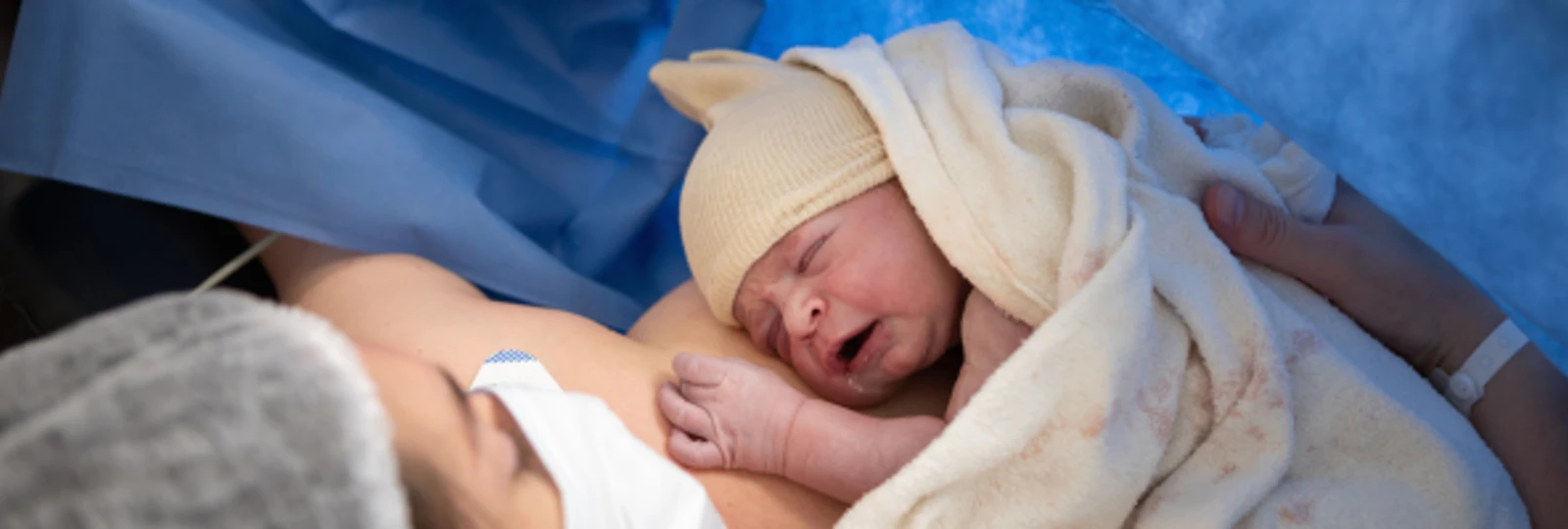
Periods after a c-section
While periods look different for everyone both pre and post-pregnancy, it can be helpful to have an idea of what your first postpartum period may be like, especially after having a c-section. This guide will go through what a c-section is, when you might expect your period to return and what you might experience when it does come back.
What is a c-section?
A caesarean section, or c-section, is an operation to deliver your baby and is an alternative to vaginal delivery. During the operation, the doctor will make a cut just below your bikini line through your abdomen and womb. They can then lift your baby out through the incision. There are two types of c-sections:
- Planned (elective) - this is where you decide to have a c-section before going into labour and usually happens at 39 weeks of pregnancy.
- Unplanned (emergency) - if there’s concern for you or your baby’s wellbeing, or your labour isn’t progressing, you may have an unplanned c-section so your baby is delivered more quickly.
Once you’ve had a c-section, you normally stay in hospital for one to two days after to recover. Here, you’ll be given painkillers, your wound will be covered with a dressing and you’ll be encouraged to move around. You should also get plenty of close contact and quality time with your newborn and may start breastfeeding.
Most women experience some pain and discomfort after giving birth through c-section. It tends to take around six weeks to fully recove r but of course, everyone is different. If you’re still in pain or don’t feel you have recovered after six weeks or you’re concerned about anything before then, get in touch with your GP.
What will my period look like after a c-section?
After your c-section, you will experience vaginal bleeding, known as lochia, for two to six weeks after birth. It can sometimes last longer but should stop by 12 weeks. It is usually quite heavy and is either red or brownish-red in colour. Lochia, however, isn’t the same as your first period after a c-section.
Like all periods, periods after a c-section can be different for everyone. Some people may have heavier or more painful periods after a c-section. Other people’s menstrual cycles may be longer or shorter than they were before. The same is true for periods after a vaginal delivery.
Periods after a c-section may include the following symptoms:
- Irregular periods
- Cramping
- Heavier or lighter periods
- Small blood clots in your periods.
If you are experiencing painful or heavy menstrual bleeding after a c-section, the first step is to consult a healthcare professional who will be able to tell you which over-the-counter pain relief medications are suitable to take. This may include:
- Ibuprofen
- Paracetamol
- Tranexamic acid, such as Evana® Heavy Period Relief Tablets
- Naproxen, such as Ultravana® Period Pain Relief Tablets - this isn’t recommended if you are breastfeeding.
Don’t hesitate to contact a healthcare professional if you are concerned about how painful or heavy your periods are postpartum.

When will my period return after a c-section?
As everyone’s bodies are different, there’s no exact timeline as to when you’ll get your first postpartum period. For those who bottle feed or combine bottle feeding with breastfeeding, your period could restart around five to six weeks after your c-section. While it’s possible to have periods while breastfeeding, those who exclusively breastfeed may not have a period until they reduce the frequency or stop altogether. It can be anywhere from four months to two years after birth that your period returns.
You can get pregnant within three weeks of giving birth, however, so it’s important to start using contraception to avoid another pregnancy. Some contraception methods aren’t recommended if you’ve had a c-section due to a higher risk of a blood clot so always make sure to speak to your midwife or GP about the best option for you.
Our menstrual health products
Do you suffer with disruptive periods?
Our menstrual health products are designed to provide effective relief from heavy menstrual bleeding (HMB) and period pain, helping you to get on with your life.
Evana Heavy Period Relief Tablets and Ultravana Period Pain Relief Tablets are easily accessible both online and from a range of pharmacies without the need for a prescription.
Explore our website to find out more about our period medicines.
-

Find relief from heavy periods
Buy Evana -

Find relief from painful periods
Buy Ultravana
Sign up to our mailing list for exclusive content and updates
